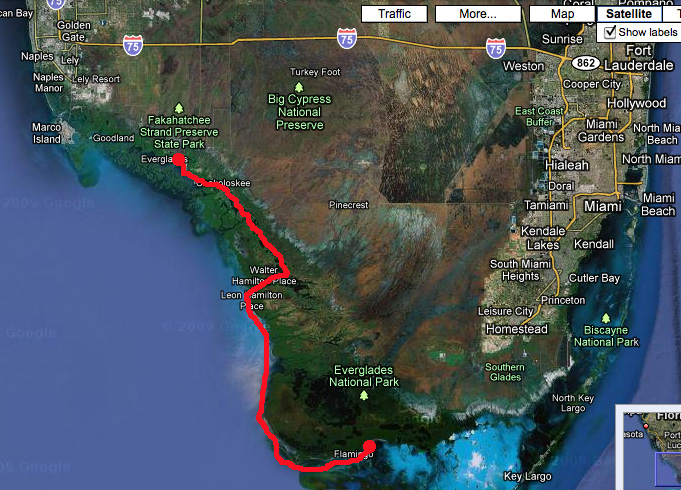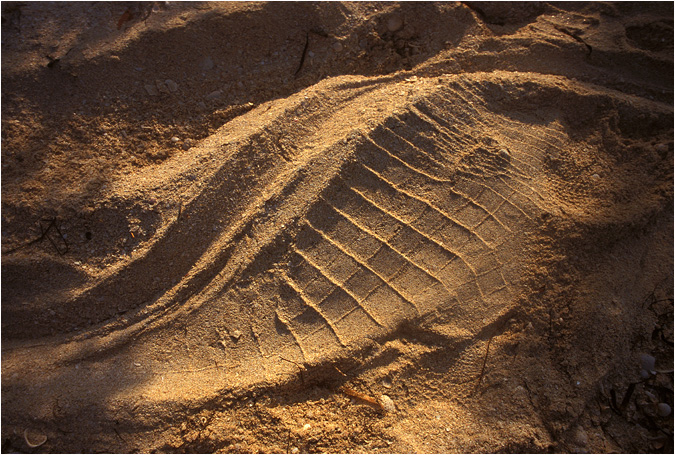Water everywhere, but Ironically the biggest obstacle is water. Being the wilderness waterway is entirely brackish water, I need to carry all my fresh water with me- and fit it in a 27 inch wide 34 pound solo canoe. Along with everything else including, camping gear, cameras, tripod, and food. So I find myself debating bringing anything not completely essential; like a chair. But, then it is nice to sit down after a day of paddling?
Luckily Bill Blanton, the editor who coincidently first assigned me to canoe the wilderness waterway in 1997 at the Naples Daily News, is now a fishing guide in the Everglades. He has a super fast boat to cover long distances in a short amount of time. He’s offered to bring me a resupply of water at the halfway point on Highland Beach. My entire trip will require somewhere around 12 gallons of water, which doesn’t sound like much, but that weighs 100 pounds, not having to cary all of that at once makes life a lot easier. So I can maybe afford the weight of a chair! Hooray for Bill!
It all comes down to weight, especially being I weigh over 200 pounds to begin with. So over the next month there will be lots of weighing stuff, packing it and unpacking it in the canoe sitting in the garage figuring out what comes and what stays at home. A very wise thing an experienced backpacker told me once. “It’s not figuring out what to bring, its figuring out what NOT to bring.”
The wilderness waterway is basically a maze of small mangrove islands with intertwining tidal rivers running through them. So there are countless routes you can take (and get lost in). I’m planning on spending the first 5 days or so on “the inside” through the maze of mangroves. Campsites are maintained by the park called Chickees, which are simply a 12×12 foot dock over the water. It’s kind of a cool experience to camp “on” the water, but as far as photography is concerned it is a bit limiting. So the second half of the trip I’m going on the outside along the Gulf of Mexico. On the coast you camp on the beaches of the outer islands. Highland Beach, a 2 mile long strip of sand is the halfway point where I will spend 2 nights and take a day off from paddling. This is when Bill will bring the water, I’m also going to see if Bill can bring a six pack of beer too! (In cans though, so I don’t have to carry out bottles) it will be warm beer by nightfall, but I’m sure it will be pretty tasty. Here’s a shot from highland beach…
The second half of the trip I will round Cape Sable, the southernmost point of the mainland United States. Cape Sable a sweet place, 14 miles of beach that you have almost entirely to yourself. It is home to some of the last remaining endangered American crocodiles. Crocodiles, unlike alligators who live in fresh water, live on the coast in brackish and salt water and nest on wilderness beaches. There aren’t a whole lot of beaches left in Florida that aren’t lined with condos, therefore there aren’t many crocodiles left. The last time I camped at Cape Sable I got to watch a crocodile swimming around in the Gulf, which was a very cool experience. One spent the night sleeping about 100 feet down the beach from me, which I never saw, but I did discover the evidence the next morning. which made for one of my all time favorite photos…


